In the human body there are cells responsible for skin color. They are called melanocytes. A mole (nevus) is an accumulation of such cells in one area. These formations come in various colors, shapes and topography. They appear both at birth and throughout life. Most often, moles do not cause any discomfort or health problems. However, recently, nevi of an oncological nature appear quite often. Even congenital benign formations can degenerate into cancer. There are quite a few reasons for this. A mole or nevus should be monitored periodically. When it changes color or shape, you should urgently consult a doctor. If there is such a formation on the body, then it cannot be injured. When taking a bath, it is better not to use a washcloth where moles grow. Often people are unhappy with the presence of such a cosmetic defect and try in every possible way to get rid of it. It is completely unacceptable to engage in such procedures at home. If the mole really looks bad, it is better to visit a medical facility. There, experienced doctors will help solve the problem without harm.
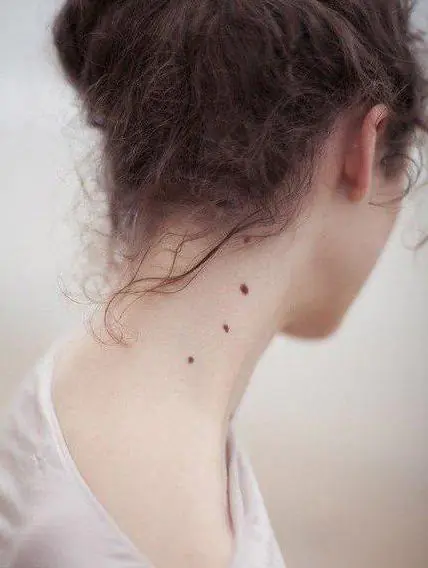
Types of moles
Main types of moles:
- Pigmented - can be light or black, small or very large. The main difference from the rest of the skin is the color.
- Vascular (hemangiomas) are pink or red formations with a bluish tint. They lighten when you press on the surface.
- Warty - raised, lumpy. Most often burgundy or pink. Sometimes they are flesh-colored.
Regardless of the group, they can all be benign or vice versa.
There are many nevi, each of which has its own medical name:
- blue moles;
- Sutton moles;
- complex moles;
- intradermal moles;
- giant pigmented moles;
- dysplastic nevi.
Sometimes it happens that hair grows from a mole. This is not some kind of alarming symptom. The most important thing is not to pull them out, so as not to injure the formation itself.
Reasons for the degeneration of a nevus into cancer
Often, most moles do not pose any danger. This requires a certain push. The most common causes of mole degeneration:
- Hormonal imbalance - during hormonal changes, skin cells change. It is necessary to carefully monitor nevi during puberty, pregnancy, and menopause. If a mole begins to grow, you should definitely consult a doctor.
- Excessive sun exposure is a major factor in the development of skin cancer. Exposure to ultraviolet radiation promotes cell degeneration. It is very important, while in the sun, to minimize the likelihood of developing burns; they greatly weaken the skin’s immunity and cause irreversible changes in it. Particular care must be taken to hide from the sun the places where moles grow.
- Trauma - Many people take moles on their body lightly. Few people know that injury to such a benign formation can quickly degenerate into cancer. Places where moles grow should not be rubbed with a washcloth. They should not be squeezed out or pulled with thread. If the mole still bothers you greatly, it is better to consult a doctor.
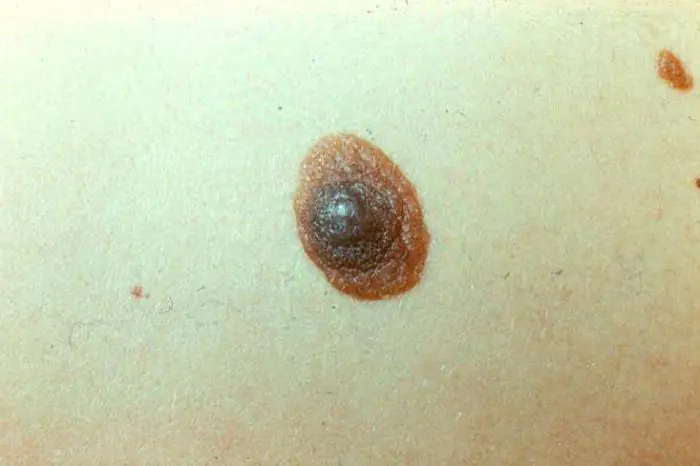
Dangerous moles
Why moles grow and how safe they are is of concern to many. You need to be very careful about them. Any changes in appearance should alert you. Periodically, congenital moles, under the influence of certain factors, can turn into cancer. The main thing here is not to miss the first symptoms. In the early stages, these diseases are easily treatable. The number of recovered people is almost 100%. In later stages, the prognosis is less optimistic and the disease can be fatal. You need to go to the hospital if a mole is growing very quickly. The doctor will tell you what to do in this case.
Symptoms of mole degeneration:
- changes in size, color;
- inflammation around the mole;
- its elevation above the surface of the skin;
- change in structure, varnish mole;
- discomfort associated with itching;
- formation of nodules, hardening;
- blurring of contours.
As for new moles, you should treat them even more carefully. Any new skin lesions larger than 0.5 centimeters require medical supervision. You should also go to the hospital immediately if a mole is growing rapidly. Not many people know which doctor to go to. Oncologists treat these diseases.
Safe moles
Most moles on the human body do not pose a health threat. Small congenital formations that are not compacted and have clear edges are completely harmless. They can degenerate into oncology only when exposed to certain factors. There is a certain type of benign nevi that can increase in size. Why moles grow is interesting to many. These types include hemangioma. This is a benign tumor caused by the accumulation of a large number of cells in the blood vessels. If the formation quickly increases in size, it is removed surgically. In most cases, treatment is carried out with hormonal drugs.

What moles need to be treated and how?
All suspicious formations on the skin require close medical supervision. Self-medication or removal at home is strictly prohibited. If the mole is benign and is a cosmetic defect, it is simply removed surgically. Laser therapy is also popular in this matter. With malignant tumors everything is more complicated. To begin with, many studies are carried out to make an accurate diagnosis and determine the stage. Then treatment is carried out. In the early stages, removal of the mole and further observation is sufficient. Advanced diseases are extremely difficult to treat. General chemical and radiation therapy is used. The prognosis may be unfavorable.
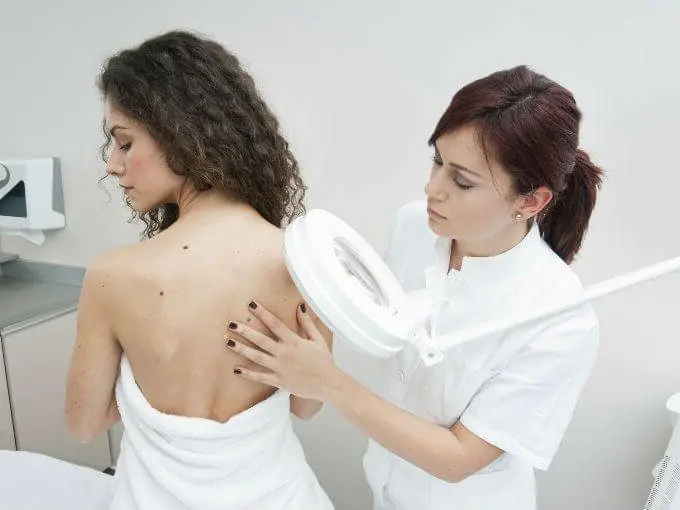
Complications after mole removal
In order to avoid complications after surgery to remove a mole, you must follow all the doctor’s instructions:
- treat the wound daily with an antiseptic solution;
- apply antibiotic ointment;
- Do not remove the crust from the surface of the wound yourself;
- Do not apply various cosmetics to the skin for 7-10 days.
As a rule, complete healing of the wound occurs after 3 weeks.
If a malignant mole has been removed, the patient must carefully monitor his body for a long time for new formations. If a relapse occurs, the patient is sent to oncology to continue treatment.
After removing ordinary moles and following all the doctor’s instructions, the risk of complications during this operation is minimal. If the size of the formation was large, scars and scars may remain, which can then be removed with a laser.
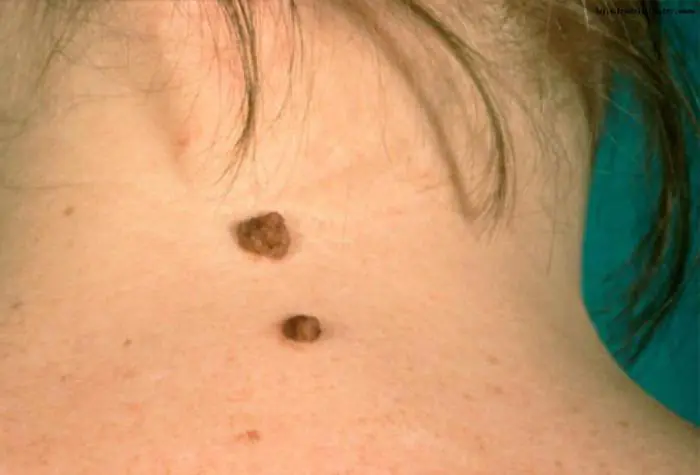
What not to do with moles
Any formations on the skin should be monitored. If the nevus does not manifest itself in any way for a long time, there is no need to worry. You should visit a doctor if new, suspicious moles appear. If existing ones begin to change, this also requires urgent medical consultation. When hair grows from a mole, under no circumstances should you pull it out or shave it off. This leads to injury, which can trigger the process of degeneration of the formation into oncology. To prevent a mole from causing problems, you must adhere to some simple rules:
- avoid prolonged exposure to the sun;
- do not use a washcloth in places where moles accumulate;
- do not pull out hairs from them;
- Moles cannot be squeezed out or combed.
If the mole is injured, you should consult a doctor.
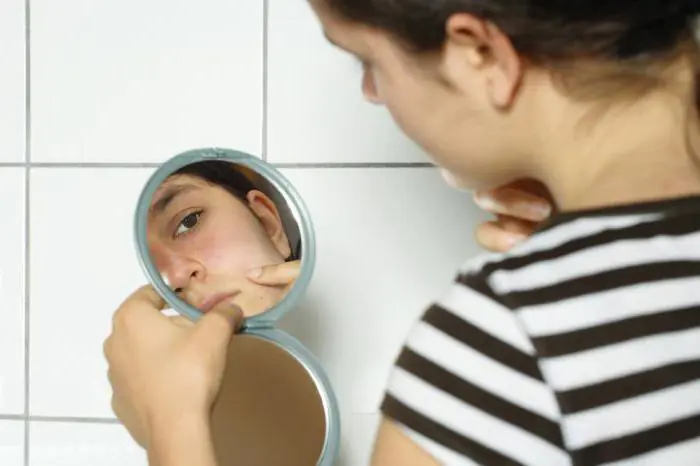
Moles in children
When moles grow on children's bodies, it causes a lot of worry for parents. The largest number of nevi in babies appear from birth to one year. Almost every child has small flat moles on the body. Require more attention:
- nevi more than 0.5 centimeters in diameter;
- elevated above the surface;
- with fuzzy edges;
- fast growing;
- changing color;
- itchy and inflamed.
If suspicious moles are identified, you should visit an oncologist.
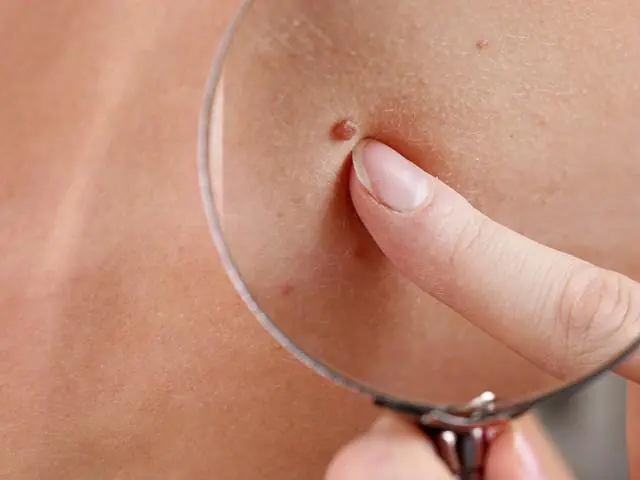
Folk signs about moles
Since ancient times, there has been a belief that a large number of moles portends a happy life for a person. By the place where moles grow, you can determine the nature:
- on the forehead - wisdom;
- on the cheeks and under the eyes - kindness and tenderness;
- on the cheekbones - courage, determination;
- on the scalp - a philosophical mindset;
- on the temple on the right - subtle intuition;
- on the ears - boasting;
- in language - such people are overly talkative;
- on the neck - high intelligence;
- on the shoulders - a karmic sign of strong people who do not recognize authorities;
- on the stomach - hysteria;
- on the eyelids - sensuality;
- above the upper lip - deceit;
- on the nose - a sense of humor, frivolity;
- on the foot - vital energy;
- On the shins - ease of instep;
- on your knees - impatience;
- on the palms - a hermit lifestyle;
- on the elbows - inability;
- on the back - demandingness towards oneself and others.
There are from several to several dozen moles on the body of an adult. Nevi differ in shape (hanging, flat or convex), size, and susceptibility to external irritating factors. They also differ in color: from light red to black shades. With age, their number on the body increases. Initially, they are safe and do not bother people. However, under the influence of various conditions, birthmarks can change. Every person who observes this phenomenon will ask what to do if a mole grows and what actions to take.
Why does a mole start to grow?
A mole is growing; what this means can be answered by a dermatologist or oncologist after a thorough examination. However, a rapidly growing nevus does not always indicate that the development of a malignant tumor or melanoma has begun. This is a dangerous disease characterized by the rapid proliferation of metastases. There are other factors that cause a mole to grow. Reasons for growth:
- Treatment with hormonal drugs. Women taking hormonal medications can provoke the growth of formations that are located on the face, neck or head. If there are many nevi on a woman’s face, they can grow under the influence of hormonal agents.
- Pressing and scratching. Formations can be located in areas that are constantly exposed to mechanical stress (back, palms, stomach, legs, shoulders). Nevus on the feet can be injured by tight shoes. If your back starts to itch, you can accidentally tear the nevus when scratching. A woman can rip off a mole on her shoulder with a bag strap. The formation on the legs can be shaved off during depilation.
- Hereditary factor. A child is born without formations on the body, but with age they can appear in the same quantity and in the places where they are located on the parents.
- Action of ultraviolet light. If the formation begins to grow, exposure to direct sunlight may contribute to this. In summer, you should spend less time under the sun, use protective equipment, and also limit your visits to the solarium.
- Regular injury. A man can damage a nevus on his face while shaving. Poor location requires their removal to avoid the risk of degeneration into cancer.
- Impaired thyroid function. It is responsible for the production of hormones, and a failure in its work leads to the growth of the nevus.
- Hormonal disorders. The height and width of the growth may change during a period of hormonal imbalance. This happens during pregnancy, during puberty in adolescents, at the onset of menopause, as well as with frequent stress, termination of pregnancy, and menstruation.
Are growing moles dangerous?
If a mole grows, this does not mean that cancer is developing. The growth of a nevus depends on many factors. However, it is not recommended to ignore modifications. It is necessary to visit a doctor who will conduct an examination and prescribe an examination, as a result of which he can determine why moles are growing. Attention should be paid to those formations that are located in open areas of the body that are constantly exposed to ultraviolet radiation.
If a mole has increased to 0.7 centimeters in diameter, and has suddenly become darker and painful, it is recommended to immediately consult a doctor. He will conduct an examination with a dermatoscope, and based on the examination, he will tell you when a mole is growing, what it means, and what actions need to be taken. The reason for visiting a dermatologist is the transformation of the surface of the nevus. From rough it can become smooth and shiny.
Particular attention should be paid to signs of degeneration of the formation into a malignant tumor. If you seek help in a timely manner, you can recognize the disease at an early stage, when it can be treated. In such a situation, the issue of removing the nevus is raised.
Symptoms of growth transformation:
- the surface of the nevus is covered with cracks;
- the nevus is covered with small black or white dots;
- hairs from the mole began to fall off;
- the nevus has changed its color: a sharp lightening or darkening of the growth indicates that a pathological process has begun;
- itching appeared;
- clearly defined boundaries of education disappeared;
- a burning sensation appeared in the area of the spot;
- the surface of the growth peels off;
- due to the inflammatory process, redness appears around the birthmark;
- discharge of blood or clear fluid;
- pain when pressing or touching clothing, shoes, etc.;
- On palpation, a compaction is felt inside the spot.
What to do if a mole grows
Often there is no sharp increase in education, so it is difficult for a person to follow such a change. This is especially true for those nevi that are located in places inaccessible to the eye. If symptoms other than an increase in size appear, you should contact a dermatologist or oncodermatologist. The doctor will visually assess the condition of the nevus, then use a manual or digital dermatoscope to analyze the structure of the formation. If a digital dermatoscope is used, the program will capture an image of the spot, which the doctor can carefully examine and make a diagnosis with further recommendations.
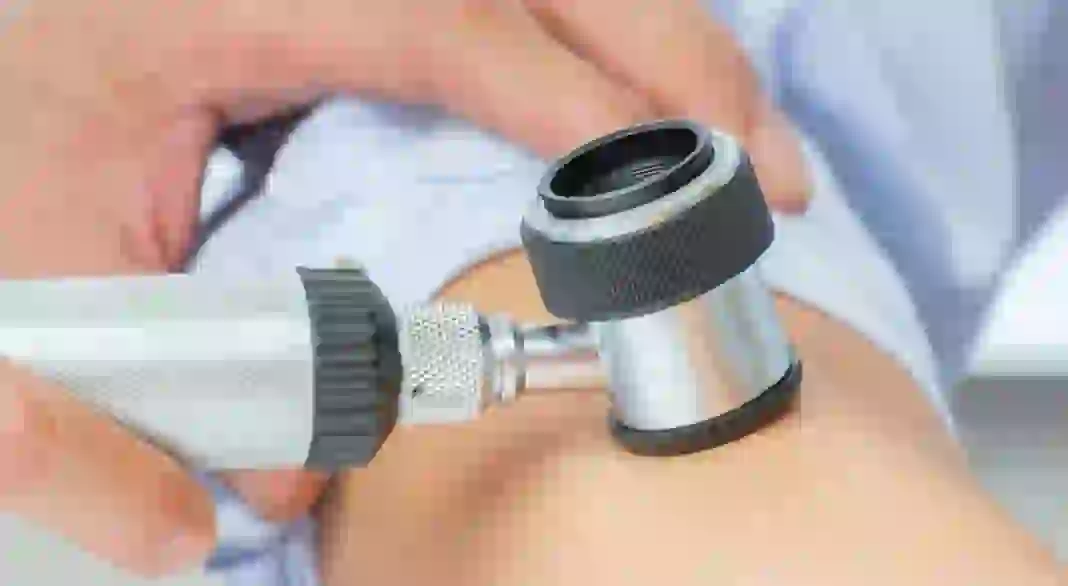
In the absence of dangerous symptoms, in addition to an increase in the size of the growth, it is necessary to monitor how it develops. Under the influence of prolonged exposure to the sun, during pregnancy, or taking hormonal medications, the mole may enlarge, but at this stage its transformation will end. The condition is the absence of irritating factors that cause melanin activation.
At the slightest change, it is recommended to visit a doctor. Self-treatment, let alone removal, is fraught with life-threatening consequences. The wounded growth can become infected.
Do growing moles need to be removed?
After passing the examination, the doctor may prescribe removal of the nevus. Another reason why a person seeks surgical removal is aesthetic discomfort. If a large mole is on the face, it will ruin a person's appearance. Doctors recommend removing moles that are located in places that are constantly subject to mechanical damage. With constant trauma to the growth, the process of degeneration into a malignant formation may begin.
Modern medicine offers several methods that can quickly, painlessly and without consequences for the body remove a birthmark. Removal methods:
- Electrocoagulation. Current is used for the operation. The procedure causes minor pain, so an anesthetic is administered before the excision.
- Surgical removal. Using a scalpel, the doctor is able to remove not only a small nevus, but also a nevus that has grown to a large size. It is not recommended to choose this method of removal if the mole is localized on a visible area of the body, since a scar remains at the site of excision.
- Cryodestruction. The growth is frozen using liquid nitrogen. After freezing it disappears. This method is not popular, as there is a high risk of re-formation of a mole in this place. This is explained by the fact that there is no possibility of controlling the depth of freezing, and the layer of the stain located deep in the dermis may not be removed.
- Laser surgery. The beam that comes from the laser removes the stain along with all tissues. Therefore, it is not possible to send the lesion for histological examination. The most popular method, despite the higher cost, since it leaves no scars and no bleeding during the excision process.
- Removal by radio waves. Using high-frequency waves, the doctor removes the birthmark. The advantage of the method is the absence of scars after surgery; the procedure and wound healing period do not take much time. Removal of small growths is indicated.
After removal, the doctor must explain how to care for the wound, taking into account the specifics of the formation. After two days, a crust forms at the removal site. Make sure that it is not damaged. After five to seven days, it will disappear spontaneously. If you tear it off, bleeding may open, which will be difficult to stop, and also cause infection.
It is recommended that the wound should not be exposed to direct sunlight and that visiting the solarium should be limited. Lubricate the wound with a solution of potassium permanganate for a week. Carry out the procedure three times a day. You can use hydrogen peroxide. Until the wound heals, it is not recommended to swim in the pool or apply cosmetics to it.
Several reasons for concern
If a person observes any changes in his mole, this is a reason to consult a doctor. It is not recommended to use traditional methods of treatment or removal. This can cause the development of melanoma, which is life-threatening. If a mole begins to itch, hurt, peel or bleed, there is no need to scratch it out or lubricate it with medications. It is necessary to consult a doctor who will conduct an examination that will not take much time and is painless. Timely detection of developing cancer cells can save a person from dangerous consequences.
What to do if a mole grows?
Nevi (moles) are benign formations that are present on the skin from birth or that arise during life. By themselves, they do not threaten health, although they can transform into malignant tumors. Similar suspicions arise if a mole grows, which previously did not cause concern. There is no need to panic, you just need to choose the right tactics of behavior.
A dermatologist can name several types of classifications of moles according to structure, shape, and depth. It is worth listing the most common types.
- Vascular (hemangioma). This is a pink or red mole in the form of a hanging nodule (sometimes flat). Hemangiomas mainly occur in young children, during the formation of the circulatory system. If a red mole begins to grow in an adult, this means that vascular function is impaired, hormonal changes are occurring, or the pancreas or liver is not working well.
- Lengito is the most common type. Pigmented cells are found in the top layer of the skin. Lengitto includes brown and black moles. They are usually not removed. If the color of a mole is initially black, then it is no more dangerous in terms of degeneration than a lighter one.
- Convex. It is formed from melanocytes located in the dermis. The diameter of a convex brown or black mole is no more than 1 cm. Its surface can be smooth or bumpy, often with hair.
- Birthmarks. Most often, they are observed already at birth and represent pigmented areas of the skin. Infants have birthmarks that occupy a large area. They may disappear over time, but require constant attention.
Why do moles grow?
One of the signs of degeneration is an increase in the size of a mole on the body, head or face. If a mole begins to grow, this does not mean that melanoma (skin cancer) has appeared. The reason for the growth may be different, although it is possible that it will give impetus to a serious illness.
- External damage to papillomas and birthmarks. Microtraumas can be caused by shaving, hair removal, combing, and constant friction. Damage to a red mole is especially dangerous: it not only provokes its growth, but is also fraught with severe bleeding.
- Ultraviolet radiation, radiation. Prolonged exposure to the open sun or in a solarium is a common cause of rapid growth of melanocytes (pigmented cells). A brown or black mole increases in size.
- Fluctuations in hormonal levels. It happens that a mole begins to increase during puberty or during pregnancy. It happens that with hormonal surges, a mole on the body becomes smaller or disappears completely.
- Heredity. Often birthmarks in children are found where their ancestors had them. Even the shape and size of the nevus can be duplicated.
What to do if a mole starts to grow. Signs of melanoma
What to do if a mole changes color, grows quickly and itches, and pain is periodically felt in it? If such signs appear or the nevus is damaged, medical consultation is required. Only a doctor can determine whether it is melanoma and decide whether to remove the mole. If you do not respond to alarming symptoms in time, the tumor grows into adjacent tissues and metastasizes through the blood and lymph.
The cause of the tumor is the accumulation of excess melanin (pigment) in moles. At the same time, the color, density, and outline of the mole quickly change. Melanoma, unlike a harmless nevus, has the following characteristic features:
- gradual increase in size;
- a change in color does not necessarily mean darkening; a black mole may become lighter during degeneration;
- the appearance of a glossy shine;
- hair loss (if they grew on the surface of the nevus);
- distortion of shape, asymmetry - the borders become uneven, the edges become jagged;
- change in structure - compaction, appearance of cracks, crusts, ulcers (sometimes with bleeding);
- itching, pain.
Why moles grow on the body
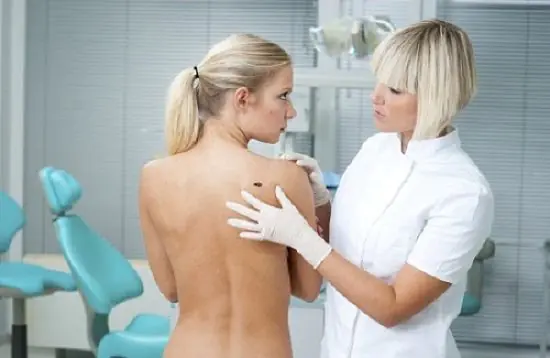
Every person has moles on the body and face. If moles begin to change and grow, this can cause a lot of trouble; this often happens during hormonal changes (menopause, transition, during pregnancy). There is a possibility that an ordinary mole may eventually turn into melanoma - a malignant formation. So why do moles grow? Let's try to figure this out.
Causes of degeneration of moles
Each mole on a person’s face and face is unique and inimitable. It can add some zest to a person’s appearance or ruin his appearance. Nevi can differ from each other according to the following characteristics:
- sizes;
- level of protrusion above the skin (flat or protruding);
- position in the thickness of the skin (superficial and deep);
- color (pigment spots can be from light brown to dark brown, in some cases even pink).
If a mole does not cause problems, then people pay attention to it only when it begins to change. A mole on the face and body can change in shape and size, suddenly lighten or darken, as a result of which everyone is interested in the question, why did it start to behave so strangely and what to do in such a situation? The only thing that can be said for sure here is that you should contact a specialist without hesitation.
As a result of numerous studies in this area, scientists were able to determine that moles on the human body and face degenerate from benign to malignant, depending on the time of their appearance on the human body. If it arose from birth, then the chances are minimal that over the years it will degenerate into melanoma, which can cause skin cancer.
Most often, skin cancer occurs if marks on the face and body occur in adulthood or adolescence. Also, studies have been able to show that the danger of “hairy” and raised moles is actually a stereotype that actually has nothing to do with reality.
Most often, formations that arise on the inner side of the thigh, palms and feet are prone to degeneration. Factors that influence the likelihood of degeneration of moles on the face and body include their original size. Marks up to 5 millimeters are less likely to degenerate.
Moles that are subjected to periodic pressure and friction can be dangerous. For example, on the chest and back under the strap of a bra or T-shirt, on the neck under the collar of a shirt.
Symptoms of melanoma formation
The process of turning a simple mole into melanoma is quite long, it can take from five to ten years, accompanied by a number of symptoms. The first sign is itching and growth of the mole. Further, the malignancy of the formation is indicated by a change in color (darkens or lightens) and density. Then cracks may appear on its surface, and in some cases bleeding. At the same time, the size of the mole becomes even larger. It is recommended to regularly check the condition of large formations on the body, or rather, their color, size and symmetry.
In the case of large formations, it is difficult to understand whether moles are growing or not, so they need to be measured. It is important that the contours of the mole are smooth and even, so that the structure and volume do not change, and growths do not appear.
Another worrying symptom will be the appearance of many small moles around a large mole. If you have nevi on your body, you need to be examined by a dermatologist and oncologist at least once a year. Since the pigments do not like the rays of hay, it is better to be examined after the summer.
Reasons for growth
Why do moles begin to increase in size and grow? One of the causes of neoplasms on the face, especially the nose, neck and cheek, may be injury to the skin due to prolonged friction, during shaving and strong pressure. Exposure to sunlight in a solarium or on the beach for a long time can cause nevi to grow. To avoid these consequences, you need to apply a thick layer of sunscreen to such moles.
Some women notice that their moles increase during pregnancy. This is influenced by changes in hormonal levels during pregnancy, which are also observed during menopause. Women who have problems with the thyroid gland are more likely to suffer from this.
Children in adolescence experience enlargement of moles as a result of hormonal changes. In general, the growth of nevi in children, especially at an early age, is a serious cause for concern. Children's skin is very vulnerable and delicate to environmental influences. Moles in children can be in the same places as in adults: on the chest, back, nose, cheeks.
The slightest change in a child's moles should occur under the supervision of a doctor. If necessary, it can be removed using one of the methods available in modern medicine.
Removal methods
Some moles can cause discomfort or greatly spoil the appearance if they are in the wrong place. What to do in such a situation? Of course, delete them. Nevi can be removed in several ways, with varying effectiveness:
- cauterization with liquid nitrogen is not very effective, since it removes only that part of the formation that protrudes above the surface of the skin;
- it is impossible to remove everything using cryodestruction, and a mole will soon appear in the same place again;
- To remove such formations, it is recommended to use the electrocoagulation technique, during which the effect is carried out using an electric current. This procedure is performed under local anesthesia and takes about twenty minutes. This method makes it possible to carry out a histological examination of the removed mole for the presence of cancer cells;
- in modern medicine, it is recommended to use a laser to remove such formations, but, of course, surgery is a more effective method.
After a mole has been removed, a scar may remain on the skin as a reminder of it. A crust appears on top of it, which will later fall off on its own. The wound should be treated with a strong infusion of potassium permanganate for several weeks until complete scarring. You can also use other healing and antiseptic agents. During this time, it is not recommended to expose the wound to water, which means not to go to baths, swimming pools, or take a shower so that the scar does not get wet.
In summing up
It is very difficult to determine by eye whether moles are growing, because they can increase by only a few millimeters per year. Why a mole begins to increase in size on any part of the face or body (on the back, chest, neck, cheek or nose) and change - this question is best asked to a specialist, so you need to regularly see a doctor, observing its behavior. During pregnancy, women should monitor the condition of moles especially carefully to see if they begin to grow. For prevention, you should avoid direct rays of the sun (in the solarium and on the beach), as well as mechanical damage to the formation, so as not to provoke its growth.
Related Posts
Why does the roof of my mouth hurt?
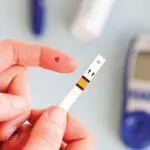
A mole is growing

The correct name for a mole is nevus. This formation is a malformation of the development and pigmentation of certain areas of the skin, which can occur both before birth and during a person’s life. Nevi, for the most part, do not pose a threat, and sometimes even help to emphasize individuality. A situation when a mole changes rapidly or grows rapidly is considered dangerous. Such transformations may indicate its degeneration into a malignant tumor.
Why do moles enlarge and grow on the body?
The transition of a nevus to the melanoma stage is not the only reason for its growth. There are also less dangerous factors that contribute to the increase in the size of moles:
- Traumaticity. Pigment spots located in areas of constant friction of the skin on clothing, periodic shaving, hair removal, and other mechanical influences are prone to growth.
- Ultraviolet radiation. Prolonged exposure to sunlight without using creams with SPF and frequent visits to the solarium also provoke this phenomenon.
- Hormonal changes. An increase in nevi is characteristic of periods of imbalance between estrogens and androgens, pregnancy, and thyroid diseases.
- Immune diseases. A weakening of the body's defense system often causes changes in skin pigmentation.
A mole is growing - does this mean the development of cancer, and what to do in such a situation?
As can be seen from the above facts, an increase in the size of a nevus does not always indicate its degeneration into a cancerous tumor. To clarify the reasons for the growth of education, it is necessary to pay attention to the following nuances:
The primary signs of melanoma are not only an enlargement of the mole, but also noticeable transformations - the spot takes on an irregular shape, jagged, uneven borders, and changes color. Additionally 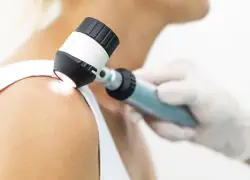
the degenerating nevus becomes denser, cracks, becomes covered with ulcerations, sometimes with bleeding, itches, and hurts on palpation.
If you have any such symptom, you must take immediate action by contacting a specialist.
Which doctor should I go to if the shape of a mole changes and if it grows?
To establish an accurate diagnosis and check the nevus for malignancy, you should visit a dermatologist and oncologist.
A benign mole can be removed. If it degenerates, the doctor will prescribe appropriate therapy.



